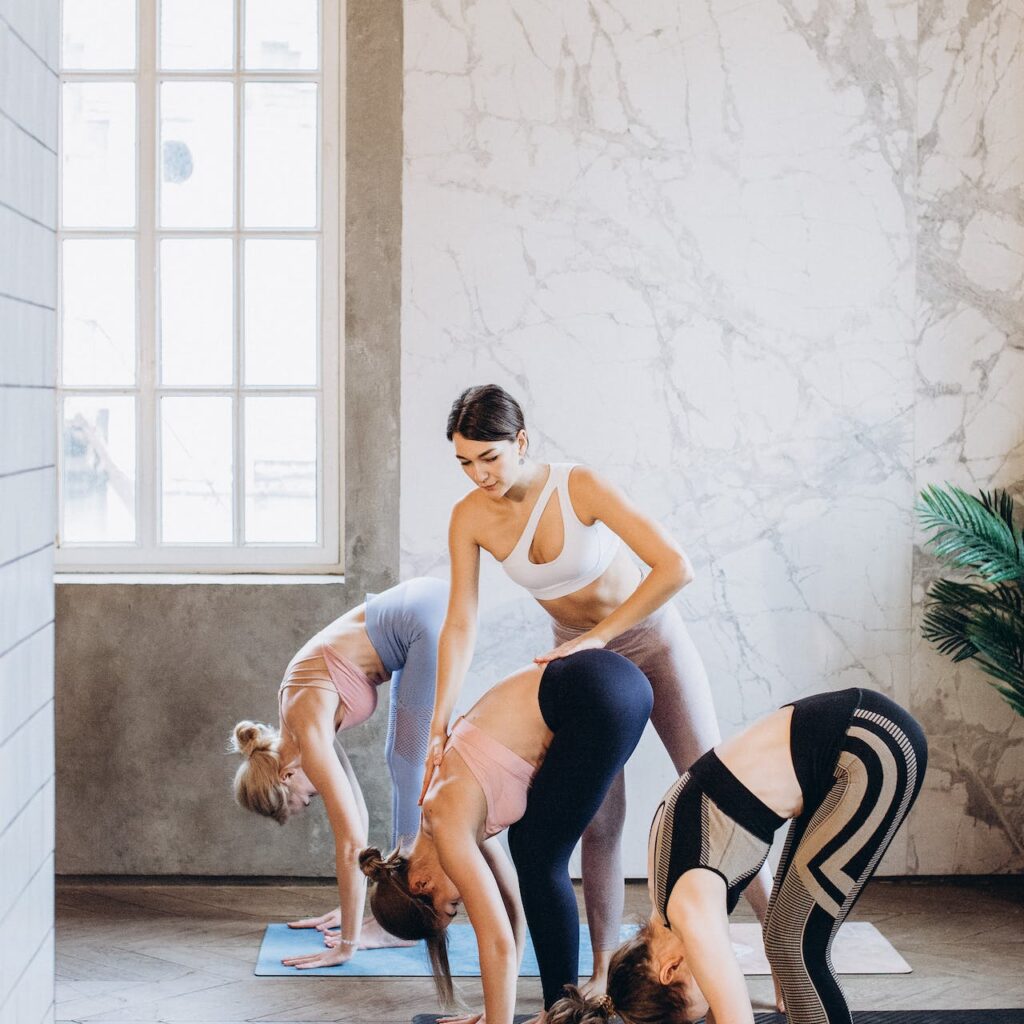
Introduction to Yoga for Beginners
Welcome to the world of yoga, where inner peace and physical well-being come together in perfect harmony. Whether you’re a complete beginner or someone who has dabbled in downward dogs before, this guide will provide you with all the information you need to get started on your yoga journey in 2024.
Yoga for Beginners is not just about achieving impressive contortions or mastering complex poses. It’s a holistic practice that encompasses body, mind, and spirit. By incorporating breathing techniques, meditation, and gentle movements into your routine, yoga can help improve flexibility, reduce stress levels, promote relaxation, and enhance overall fitness.
In this blog post, we’ll explore various types of yoga for beginners and discuss essential equipment and clothing needed to support your practice. We’ll also provide tips for setting up a serene home practice space that inspires tranquility. Additionally, we’ll share common mistakes to avoid as a beginner yogi and offer strategies for staying motivated along the way.
So roll out your mat or find a comfortable spot on the floor because it’s time to dive into the world of easy yoga poses specifically designed for beginners like you! Let’s embark on this transformative journey together as we discover the numerous benefits of practicing yoga while nurturing our bodies and souls simultaneously.
Benefits of Practicing Yoga
Benefits of Practicing Yoga
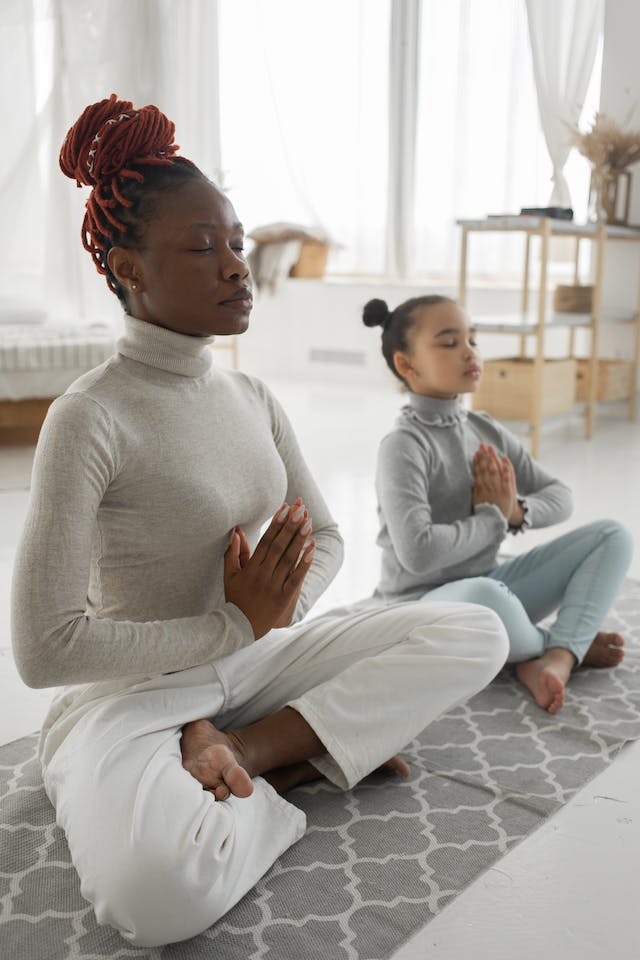
Yoga is not just a physical exercise, but a holistic practice that offers numerous benefits for both the mind and body. Here are some of the key advantages of incorporating yoga into your daily routine:
1. Improved Flexibility: One of the most obvious benefits of practicing yoga is increased flexibility. Through regular stretching and holding different poses, you can gradually improve your range of motion and loosen up tight muscles.
2. Increased Strength: Although yoga may not involve heavy weights or intense cardio, it still helps build strength in various muscle groups. Poses like downward facing dog, plank, and warrior strengthen your core, arms, legs, and back.
3. Stress Relief: In today’s fast-paced world, stress has become all too common. Yoga provides an excellent outlet for releasing tension and calming the mind. The combination of deep breathing exercises and mindful movements helps promote relaxation and reduce anxiety.
4. Better Posture: Spending long hours sitting at desks or hunching over electronic devices can take a toll on our posture. Yoga focuses on alignment and proper body positioning to help correct postural imbalances.
5. Enhanced Focus and Mental Clarity: The meditative aspect of yoga cultivates mindfulness by bringing attention to the present moment through breath awareness. Regular practice improves concentration skills while reducing mental clutter.
6.Improved Sleep Quality: If you struggle with insomnia or restless nights, incorporating gentle evening yoga sequences into your bedtime routine can be highly beneficial for promoting better sleep quality.

7.Increased Energy Levels : Instead of relying solely on caffeine to boost energy levels throughout the day , practicing a few energizing asanas i.e., sun salutations (Surya Namaskar) leave practitioners feeling rejuvenated .
Remember that these are just some highlights; there are many other amazing benefits that come from regularly practicing yoga.
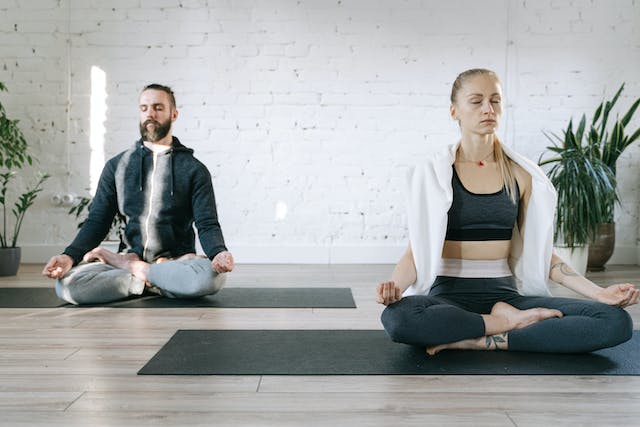
Types of Yoga for Beginners
Types of Yoga for Beginners
When it comes to yoga, beginners have a wide variety of options to choose from. Each type of yoga offers unique benefits and caters to different needs and preferences. Here are some popular types of yoga that are perfect for beginners:
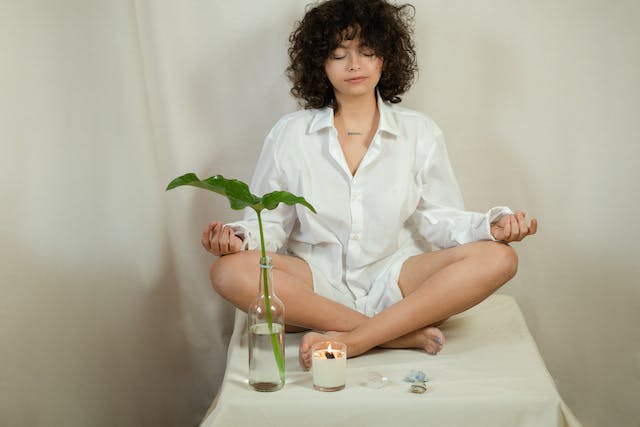
1. Hatha Yoga: This is a gentle form of yoga that focuses on basic poses and breathing techniques. It is great for improving flexibility, strength, and balance.
2. Vinyasa Yoga: Also known as flow yoga, this style involves moving through a series of poses in sync with your breath. It helps improve cardiovascular health, build endurance, and increase flexibility.
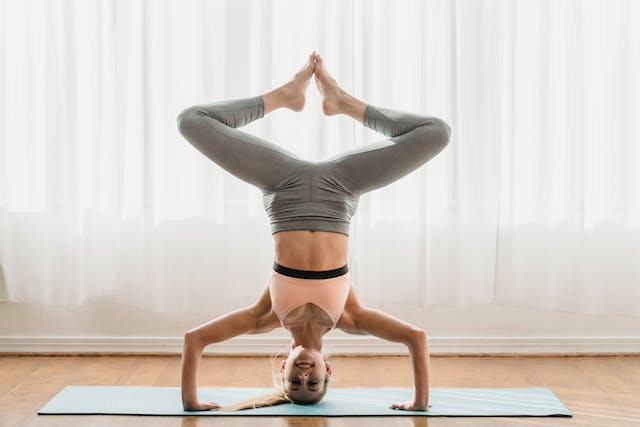
3. Yin Yoga: This slow-paced style targets the deeper connective tissues in the body through passive stretching. It promotes relaxation, reduces stress, and increases circulation.

4.Iyengar Yoga: This type emphasizes alignment and uses props like blocks and straps to help achieve proper positioning in each pose.

It is ideal for those looking to improve their posture and strengthen their core muscles.
5.Restorative Yoga: Designed for relaxation and rejuvenation,this practice involves holding supported poses for extended periods.
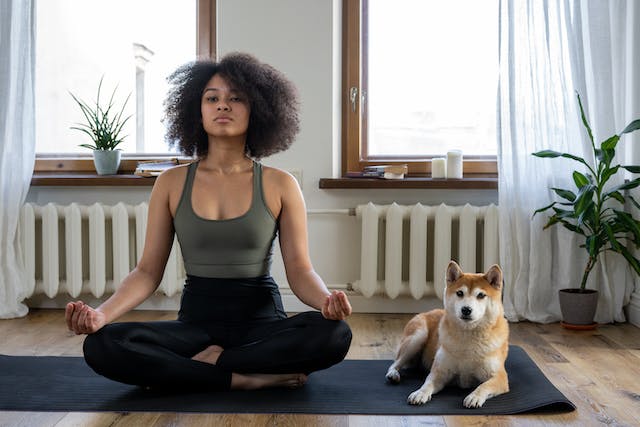
It helps release tension,stress,and calms the mind.
No matter which type you choose,start with beginner-friendly classes or tutorials online.
Always listen to your body,give yourself time,and be patient.
Yoga is about self-discovery,enjoyment,and finding what works best for you.
So explore these different types,welcome new experiences,and find joy in your journey towards wellness!
Essential Equipment and Clothing for Yoga
Essential Equipment and Clothing for Yoga
When it comes to practicing yoga, having the right equipment and clothing can make a big difference in your comfort and overall experience. While you don’t need a lot of fancy gear to get started, there are a few key items that can enhance your practice.
Investing in a good quality yoga mat is essential. Look for one that provides enough cushioning and grip to support your poses. A non-slip mat will help prevent any accidental slips or falls during your practice.
Comfortable clothing is also important for unrestricted movement. Opt for breathable fabrics like cotton or moisture-wicking materials that will keep you cool and dry as you work up a sweat. Choose form-fitting but not too tight clothes so they won’t interfere with your movements.
Additionally, having props such as blocks, straps, and bolsters can be helpful, especially if you’re just starting out or have limited flexibility. These props provide support and assistance in achieving proper alignment in various poses.
Consider investing in some soothing accessories like scented candles or calming music to create a relaxing atmosphere during your practice.
Remember, while these items may enhance your yoga journey, the most important thing is showing up on the mat with an open mind and willingness to learn. So grab what you need (or what feels comfortable) and let’s start flowing!
Setting up a Home Practice Space
Setting up a Home Practice Space
Creating a dedicated space in your home for your yoga practice can enhance the overall experience and make it more enjoyable. Whether you have a spare room, a corner of your living room, or even just a small area in your bedroom, here are some tips to help you set up an inviting and functional home practice space.
Choose an area with good natural light if possible. Natural light not only provides better visibility but also creates a calming atmosphere. If natural light is limited, consider using soft lighting options like lamps or candles to create a soothing ambiance.
Next, declutter the space and remove any distractions. Clear away unnecessary items and create an environment that promotes relaxation and focus. You can add personal touches such as plants or inspirational quotes to make the space feel more inviting.
Invest in a good quality yoga mat that suits your needs and preferences. A non-slip mat with adequate cushioning will provide comfort during poses while ensuring stability.
Consider adding props such as blocks, straps, or bolsters to support your practice. These props can assist beginners in achieving proper alignment and help modify poses based on individual flexibility levels.
Incorporate elements of nature into your practice space if possible. Open windows for fresh air circulation or play soothing nature sounds to create an immersive experience.
By setting up a dedicated home practice space, you’ll be able to establish consistency in your routine while enjoying the convenience of practicing whenever it suits you best.
Tips for Starting a Yoga Routine
Tips for Starting a Yoga Routine
1. Set realistic goals: When starting a yoga routine, it’s important to set realistic goals that align with your current fitness level and schedule. Start with shorter sessions and gradually increase the duration as you become more comfortable.
2. Find the right style: There are various types of yoga, each offering unique benefits. As a beginner, explore different styles such as Hatha, Vinyasa, or Yin yoga to find what resonates with you.
3. Take it slow: Remember that yoga is not a competition; it’s about listening to your body and honoring its limits. Don’t push yourself too hard in the beginning – focus on proper alignment and breath control before advancing in poses.
4. Create a consistent routine: Consistency is key when establishing any new habit. Choose specific days and times for your practice and stick to them as much as possible.
5. Seek guidance from experts: Consider taking classes or seeking guidance from experienced instructors who can provide personalized feedback on your form and offer modifications if needed.
6 . Incorporate mindfulness techniques: Yoga goes beyond physical exercise; it also promotes mental well-being. Incorporate mindfulness techniques such as meditation or deep breathing into your practice for added relaxation benefits.
Remember that starting a yoga routine is about self-care and self-discovery rather than perfection or achieving complex poses right away. Embrace the journey, be patient with yourself, and enjoy the transformative power of this ancient practice!
Common Mistakes to Avoid as a Beginner
Common Mistakes to Avoid as a Beginner
When starting out on your yoga journey, it’s important to be mindful of certain mistakes that many beginners tend to make. By learning from these common errors, you can set yourself up for success and enjoy the full benefits of your practice.
One mistake is pushing too hard or trying advanced poses right away. Remember, yoga is a gradual process of building strength and flexibility. Start with basic poses and gradually progress as you become more comfortable and confident.
Another mistake is comparing yourself to others in the class. Yoga is a personal practice, and everyone has different strengths and limitations. Focus on your own progress rather than what others are doing.
Improper alignment is another pitfall for beginners. It’s crucial to pay attention to proper form in each pose to avoid strain or injury. Take the time to learn correct alignment cues from an experienced teacher or reputable online resources.
Neglecting breathwork is also a common mistake among newcomers. Breath awareness plays a vital role in yoga practice, helping us stay present and calm. Cultivate a steady breath throughout your practice by focusing on inhaling deeply through the nose and exhaling fully through the mouth.
One major misstep beginner yogis often make is skipping relaxation at the end of their session – Savasana (Corpse Pose). This final resting posture allows our bodies and minds to integrate all the benefits gained during our practice. Give yourself permission to fully surrender into this well-deserved restorative pose.
By avoiding these common mistakes, you can cultivate a safe, enjoyable, and effective yoga practice as a beginner yogi!
How to Stay Motivated with Your Yoga Practice
Staying motivated with your yoga practice can sometimes be a challenge, especially as a beginner. But fear not! There are several strategies you can implement to keep yourself motivated and committed to your yoga journey.
Set realistic goals for yourself. Instead of aiming to do an hour-long practice every day, start with shorter sessions that you know you can realistically fit into your schedule. Gradually increase the duration and intensity of your practice as you become more comfortable.
Find joy in the process. Remember that yoga is not just about achieving specific poses or perfecting your form; it’s about connecting mind, body, and soul. Embrace each moment on the mat as an opportunity for growth and self-discovery.
Additionally, vary your routine to keep things interesting. Try different styles of yoga or explore new sequences and poses. This will help prevent boredom and stagnation in your practice.
Another helpful tip is to join a community or find a buddy who shares your passion for yoga. Having someone to hold you accountable and share experiences with can make all the difference in staying motivated.
Be kind to yourself on days when motivation feels low. Remember that progress takes time and effort – don’t beat yourself up over missed practices or perceived setbacks.
By implementing these strategies into your routine, you’ll be well-equipped to stay motivated on this beautiful journey of self-exploration through yoga!
Resources for Learning and Advancing in Yoga
Resources for Learning and Advancing in Yoga
1. Online Classes and Tutorials: One of the most convenient ways to learn yoga is through online classes and tutorials. Many experienced instructors offer virtual lessons that you can access from the comfort of your own home. These classes often cater specifically to beginners, providing step-by-step instructions and modifications for different levels of flexibility.
2. Mobile Apps: In this digital age, there are plenty of mobile apps available that provide yoga guidance for beginners. These apps offer a variety of features such as video demonstrations, pose libraries, customizable routines, and progress tracking. Some even have built-in timers to help you stay on track during your practice.
3. Books and E-Books: If you prefer a more traditional approach to learning, investing in yoga books or e-books can be highly beneficial. There are numerous well-written guides available that cover everything from basic poses to advanced sequences. Look for authors who have extensive experience teaching yoga or who specialize in beginner-friendly content.
4. YouTube Channels: YouTube is an excellent resource for free yoga tutorials suitable for beginners with no experience at all! Many respected yogis have dedicated channels where they share instructional videos focusing on proper alignment, breathing techniques, meditation practices,and easy yoga poses for flexibility.
5.Workshops/Retreats: Attending workshops or retreats conducted by experienced teachers allows you to immerse yourself in the world of yoga while receiving personalized guidance.
Many workshops include interactive sessions covering topics like mindfulness meditation,yoga philosophy,and pranayama (breathing exercises).
Remember that everyone’s journey in practicing yoga is unique; therefore it’s important to find resources that resonate with your individual needs.
Beginners should start slow and gradually build up their practice over time.
There are countless resources available out there waiting to assist you on your path towards mastering this ancient art form! So explore various options,don’t hesitate to seek guidance when needed,and always remember that consistency is key. Happy yoga journey!
Conclusion
Conclusion:
As you embark on your journey into the world of yoga, remember that it is a practice that can bring countless benefits to your mind, body, and spirit. Whether you choose to start with easy yoga poses for beginners or delve into more advanced techniques, the key is consistency and patience.
Yoga has been proven to improve flexibility and strength while also promoting stress relief and overall well-being. By incorporating this ancient practice into your daily routine, you are taking a step towards a healthier and more balanced life.
Remember to start slowly and listen to your body’s needs. There are various types of yoga for beginners, such as Hatha or Vinyasa flow, so explore different styles until you find one that resonates with you.
Setting up a home practice space will allow you to cultivate a sense of tranquility in your surroundings. Invest in essential equipment like a sticky mat, blocks, straps, and bolsters to support your poses.
Starting a regular yoga routine may seem daunting at first but by following simple tips like scheduling dedicated time for practice and finding an accountability partner or online community can help keep motivation high.
Avoid common mistakes such as comparing yourself to others or pushing too hard too soon. Remember that progress takes time and each person’s journey is unique.
To continue advancing in yoga, utilize resources like online tutorials or workshops offered by experienced instructors. Keep exploring new poses challenging yourself while always listening to what feels right for your body.
In conclusion (Oops!), starting yoga as beginner is an exciting endeavor filled with endless possibilities for growth both physically and mentally. With dedication. you must read our this blog for better healthhttps://lifestyleelevate.com/the-ultimate-guide-to-getting-slimfit/
FAQS
FAQs
Q: What are some easy yoga poses for beginners?
A: Some easy yoga poses for beginners include Child’s Pose, Mountain Pose, Downward-Facing Dog, and Cat-Cow Pose. These poses are great for gently stretching the body and building strength.
Q: Can I do yoga at home as a beginner?
A: Absolutely! Yoga can be practiced anywhere, including in the comfort of your own home. There are plenty of online resources and videos available to guide you through a beginner-friendly routine. Just make sure you have enough space and a quiet environment to practice.
Q: Can I start doing yoga if I have no experience?
A: Of course! Yoga is suitable for people of all fitness levels and backgrounds. It’s never too late to start practicing yoga, even if you’ve never done it before. Just remember to listen to your body, take things slow, and gradually increase the intensity as you become more comfortable.
Q: Is yoga good for flexibility?
A: Yes! One of the many benefits of practicing yoga is improved flexibility. Regularly performing gentle stretches in different poses helps lengthen muscles and increase joint mobility over time.
Q: Are there specific types of yoga that are recommended for stress relief?
A: Yes! Some types of yoga that are particularly effective for stress relief include Hatha Yoga, Yin Yoga, Restorative Yoga, and Kundalini Yoga. These practices focus on deep breathing exercises and gentle movements that help calm the mind and relax the body.
In conclusion,
Yoga offers numerous physical, mental, emotional,and spiritual benefits that can greatly enhance our overall well-being.
By starting with basic easy-to-do poses specifically designedfor beginners,you can build a solid foundation before progressing into more advanced practices.
With minimal equipment needed,a dedicated practice space,and motivation,you’ll soon find yourself reapingthe rewards of this ancient discipline.
Remember to avoid common mistakes,don’t push yourself beyond your limits, and stay consistent with your practice.
Whether you choose.you must visit this site for more informations about yoga for beginnershttps://en.wikipedia.org/wiki/Yoga

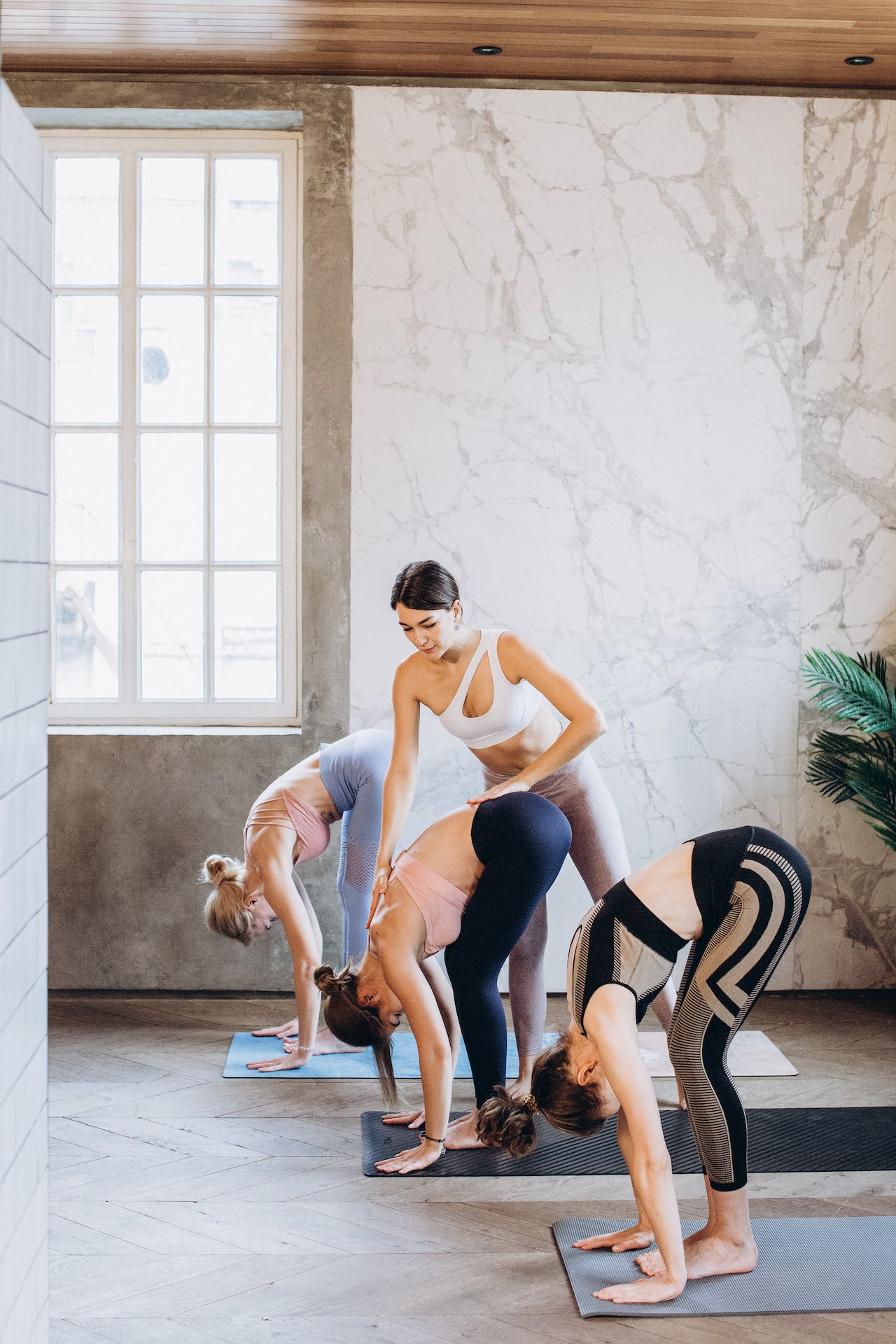


1 Comment
Your comment is awaiting moderation.
Thanks for sharing. I read many of your blog posts, cool, your blog is very good.
[…] pivotal as the exertion itself. I f you want to read more about health please visit our this blog https://lifestyleelevate.com/yoga-for-beginners/. So this was over bolog Which of the Following Is Not a Benefit of […]